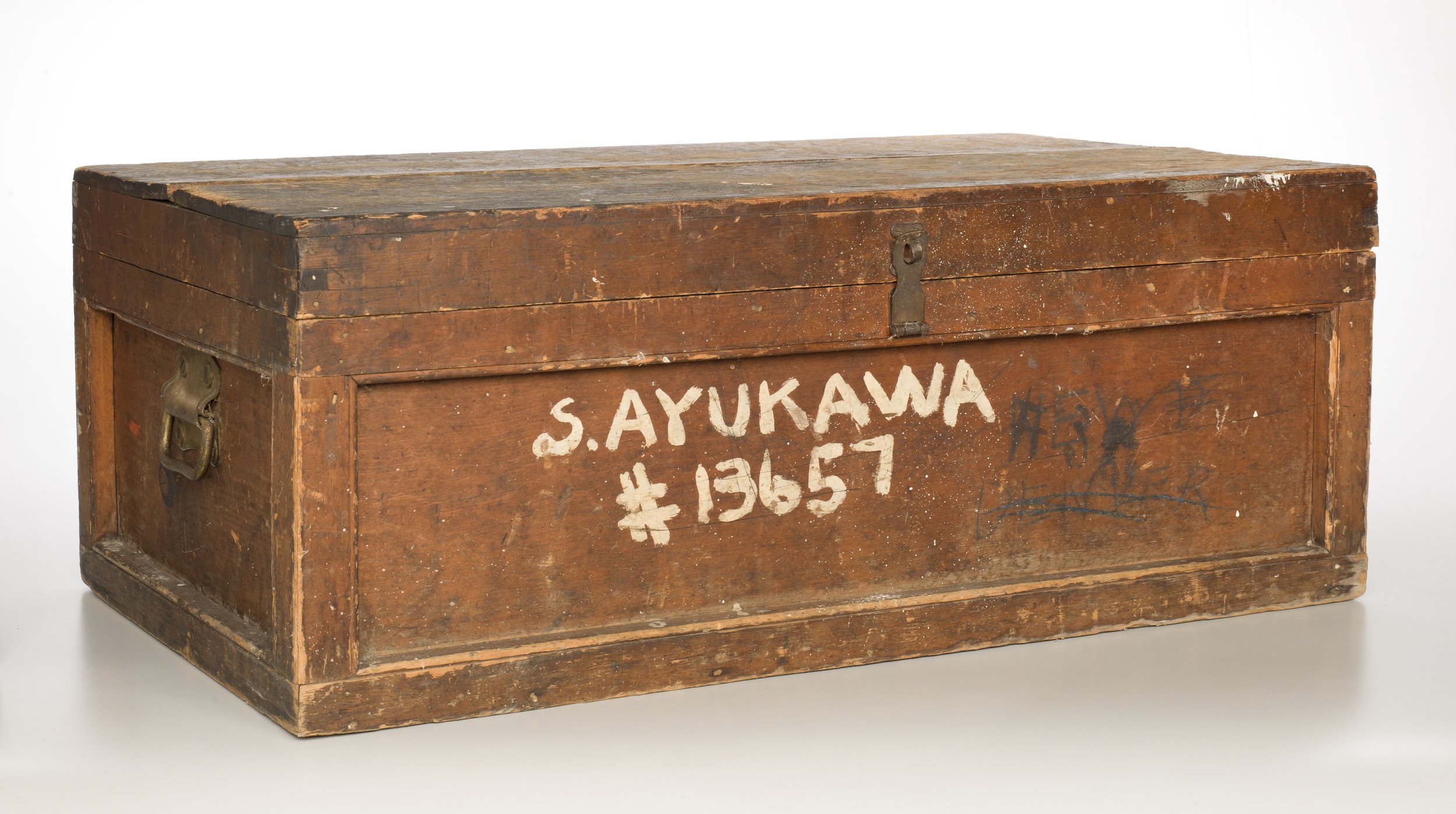Founded in 2014 by mother-daughter team Christine Mori and Alexis Spieldenner, Bravo Niagara! is a not-for-profit charitable organization based in Niagara-on-the-Lake, Ontario that produces transformative concert experiences and multidisciplinary programming featuring leading and emerging artists from across Canada and around the world.
Alexis Spieldenner (left), and Christine Mori (right). Photo credit: Bo Huang
Kimiko’s Pearl is a new, original ballet based on the Japanese Canadian internment of WWII. This marks the first time this tragic wartime experience has been told through ballet. Commissioned and produced by Bravo Niagara!, the ballet is based on a story by Emmy Award-winning writer Howard Reich and inspired by the family history of Bravo Niagara! co-founders Mori and her daughter Spieldenner, who serve as co-creators and producers of the ballet. Presented by the First Ontario Performing Arts Centre (250 St. Paul St, St. Catharines), tickets are available now for the world premiere performances on June 22 at 7:30 p.m. and June 23 at 2:30 p.m.
Kimiko’s Pearl tells the story of four generations of the Ayukawa family of Mission, B.C. whose lives were forever changed. From 1942 to 1949, the Canadian government uprooted, interned, permanently dispossessed, and displaced over 22,000 Japanese Canadians.
Born during the pandemic, the production, which has been in development for over three years, brings together a diverse team of creators from Canada and the U.S. and uniquely bridges three generations of Japanese Canadians.
Kimiko’s Pearl comes to life onstage through original music by Kevin Lau (Le Petit Prince, The National Ballet of Canada) and choreography by Yosuke Mino (Royal Winnipeg Ballet). This is the first full length ballet that Yosuke Mino has choreographed. The ensemble of dancers includes Kyra Soo (Royal Winnipeg Ballet), Yue Shi (Boston Ballet), Chenxin Liu (Boston Ballet), Liam Caines (Royal Winnipeg Ballet), Rachel Gibbs (Coastal City Ballet), Liam Saito (Royal Winnipeg Ballet), and Yayoi Ban (Royal Winnipeg Ballet).
The production also features sound design by Aaron Tsang and musicians Ron Korb (flute), Conrad Chow (violin), and Rachel Mercer (cello), as well as projections featuring Ayukawa family photographs and original commissioned artwork by Norman Takeuchi, CM, Lillian Yano Blakey, Emma Nishimura, and Miya Turnbull.
Kimiko’s Pearl was inspired by the Ayukawa family trunk, currently in the collection of the Canadian War Museum, which was built by Christine Mori’s grandfather Shizuo Ayukawa in the New Denver Internment Camp of B.C. The story of the ballet – spanning over a century – is told through the eyes of Kimiko, a 15-year-old Toronto girl who discovers this old family trunk containing her great-grandfather’s diary and other precious keepsakes. As Kimiko reads the diary, her family’s tale comes to life. Her great-grandfather Shizuo leaves his home in Japan in 1917 to start a new life in Canada. He marries Natsue, a “picture bride” from Kagoshima, and they become berry farmers in Mission, B.C. But after the attack on Pearl Harbour in 1941, their lives and the lives of their descendants are irrevocably changed.
Ayukawa Family trunk. Photo credit: Canadian War Museum
Kimiko’s Pearl reflects the tragedies, triumphs, and perseverance of Japanese Canadians before, during and after the Japanese Canadian internment. Their harsh experiences attest to heroism and hope in the face of racism.
Earlier this month I interviewed Alexis Spieldenner about the upcoming production.
This is the first ballet that Bravo Niagara! has produced in its 10 years of operation. The organization has been primarily a music organization presenting and producing today’s leading classical and jazz artists in the Niagara Region. When venues were closed during the pandemic, they saw it as an opportunity to create something new. Voices of Freedom is an initiative of Bravo Niagara! that gives voice to underrepresented histories through the arts. They wanted to share their family’s story and thought that ballet would be a powerful and universal way to do so. Spieldenner says there's something very powerful about experiencing the story without words, something visceral that gets to the emotion of the story, and that because it was a history that there was a lot of silence around it's fitting that the audience experiences this story without words.
There are many Japanese Canadian collaborators on the Kimiko’s Pearl team. Spieldenner has found it rewarding and fulfilling to connect with them. The collaborators have fully embraced the project as their own and have been committed to sharing this important story. The team is multigenerational. Second, third, and fourth generation Japanese Canadians are part of the creative process, all learning from each other and offering different perspectives to bring the story to life. Although the response from the Japanese Canadian community has been positive, her hope is that the ballet doesn't just reach people within the community. She hopes that it reaches the broader Canadian community, showing them the resiliency of the Japanese Canadian community, and shedding light on this part of history that a lot of Canadians don't know about. When asked what she hopes audiences will take away from the performance beyond education about an underrepresented history, she says that there’s a universality to the story that a lot of people will be able to relate to. “I hope that it does encourage people to learn more about their own family history, and that it’ll create a dialogue around that because I think it’s crucial in understanding your own identity. Looking back at your past and having that greater, deeper understanding of what your ancestors endured…that’s important to your own identity and moving forward. It’s part of the healing journey. I know that for my family, and for myself, this has been a transformative experience.”
Kyra Soo, Liam Saito, Rachel Gibbs, Yue Shi, Chenxin Liu, Yayoi Ban. Photo Credit: Alex Heidbuechel
I asked about the process of assembling such a large and diverse team of creators from Canada and the U.S. Bravo Niagara! had wanted to commission something new for a while. They reached out to Canadian composer Kevin Lau. The project started off as a new piece of music that they would commission Kevin to write, that was about five minutes long and integrated family archival photographs. Fast forward three years and now it's evolved into this ballet with multiple art forms.
Bravo Niagara! worked with Emmy Award-winning writer Howard Reich in 2020 on a Voices of Freedom initiative that was commemorating the 75th anniversary of the end of the Holocaust. He was invited to participate on a virtual panel. Reich is the son of Holocaust survivors. When Mori and Spieldenner decided to share the story of the Japanese Canadian experience, they approached Reich about the possibility of creating a story inspired by their family history. Mori reached out shortly after reading Reich’s farewell column in the Chicago Tribune, where he had been the arts critic for over 40 years. They were thrilled when he said he wanted to be involved. Spieldenner says it's been such an honor to work with him.
The visual artists whose work is featured through projections on screen in the production are all artists whose work Bravo Niagara! have admired.
What happens after the premiere? Bravo Niagara! is exploring different possibilities for Kimiko’s Pearl after the June premiere. They intend to tour the ballet to select cities throughout Canada. Kimiko’s Pearl Symphonic Suite based on music from the ballet, will be premiered on April 9 and 11, 2025, as part of the Toronto Symphony Orchestra’s Masterworks Series. Audiences will be treated to a powerful performance of Lau’s score, allowing them to go on a journey and experience the story coming to life without the visuals and without words.
Follow Bravo Niagara! on Instagram.
Interview by Glodeane Brown
If you liked this post please like, comment, and share.




